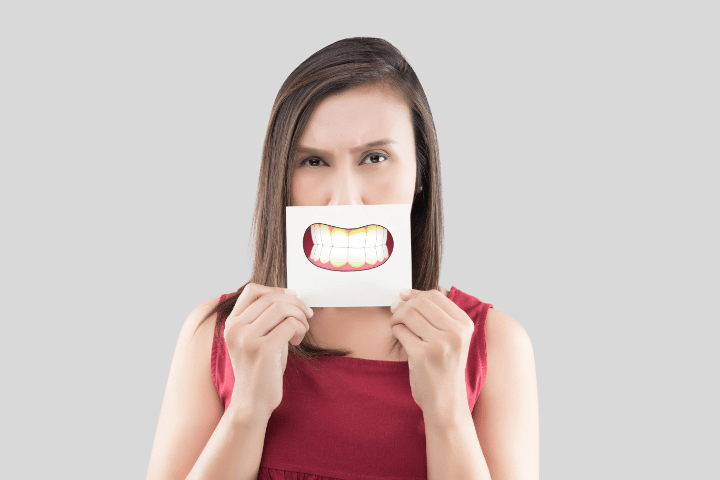
According to research, facial appearance can negatively affect self-perception and body image. Likewise, studies have also demonstrated that poor dental esthetics can have a detrimental effect on the way others perceive one's personality, intelligence, ability, motives, and other attributes. Among all the dental and occlusal asymmetries, midline deviation might be the most obvious to the human eye.
Understanding Dental Midline Deviation
The dental midline essentially functions as the line that separates one side of your face from the other. It's the line where, when you bite down, the two centre teeth at the top of your mouth and the two centre teeth at the bottom of your mouth overlap.
A canted midline or midline deviation occurs when this line shows some asymmetry. In other words when your front teeth do not align with your facial midline that precisely bisects your nose and the distance between your eyebrows.
Clinical Significance
Midline deviation serves as a valuable clinical indicator for evaluating occlusal discrepancies and identifying potential dental malocclusions. By assessing the midline shift, dental professionals can gain insights into the nature and extent of misalignment, aiding in the development of appropriate treatment plans and orthodontic interventions.
Additionally, midline shift may indicate underlying skeletal issues, such as maxillary or mandibular discrepancies, which can have broader implications for facial skeletal development. Proper assessment of midline shift can aid in identifying these skeletal abnormalities and guide appropriate referrals or treatment plans.
Causes of Midline Shift
The primary factors that contribute to dental midline shift might vary for each individual. However, the most common causes for the discrepancy are:
- Early loss of baby teeth - The primary teeth play a crucial role as temporary space holders for permanent teeth. Premature loss of these primary teeth can result in potential shifts within the entire dental structure as the permanent teeth emerge.
- Bad childhood habits (prolonged thumb-sucking) - Prolonged thumb-sucking or pacifier use during childhood can lead to a range of orthodontic problems, including misaligned dental midlines.
- Congenitally missing teeth or Hypodontia - Dental Hypodontia, or the absence of one or more adult teeth, can occur as a result of gum disease, tooth decay, injury, or congenital factors. In response to the vacant space, the surrounding teeth may shift, leading to a dental midline displacement.
- Macrodontia & Microdontia - These conditions affect the size and proportion of teeth in individuals. They can occur due to various factors, including genetic predisposition, developmental abnormalities, hormonal imbalances, or certain medical conditions.
- Jaw misalignments - Crossbite, open bite, and underbite are distinct forms of jaw misalignments that can result in malocclusion, preventing the teeth from fitting together properly. Thus, resulting in the midline shift.
How to Treat it?
Now that you’re aware of the importance of midline deviation, one might wonder how to correct it. Well, treatment options for improving midline deviation vary, depending on the severity of the condition. These include, traditional braces, clear aligners, hyrax expander and extraction.
Correcting Midline Deviation with Clear Aligners
Clear aligners, in particular, offer a highly effective and discreet solution for resolving midline discrepancies. The advantage of their invisibility allows individuals to undergo treatment without feeling self-conscious, even during social events. Additionally, clear aligner treatments are painless, providing a comfortable experience compared to traditional metal braces. In severe cases, it can also be paired with additional dental appliances to correct the dental midline misalignment.
Conclusion
Everyone loves a symmetrical smile. Regardless of the underlying factor causing your misaligned dental midline, modern dentistry provides effective solutions. Therefore, you shouldn’t hesitate to seek correction treatment as soon as possible. We can help you achieve your dream smile with our innovative clear aligner technology. Contact us today or take a free assessment.
FAQs
What is Midline Deviation?
A dental midline shift occurs when the midline shows some signs of asymmetry, i.e. when the line between the lower teeth does not align with the line between the lower upper teeth.
Is Midline Deviation treatable?
Yes, modern dentistry offers many solutions to the problem. However, most of the cases can be resolved using clear aligner treatment.

